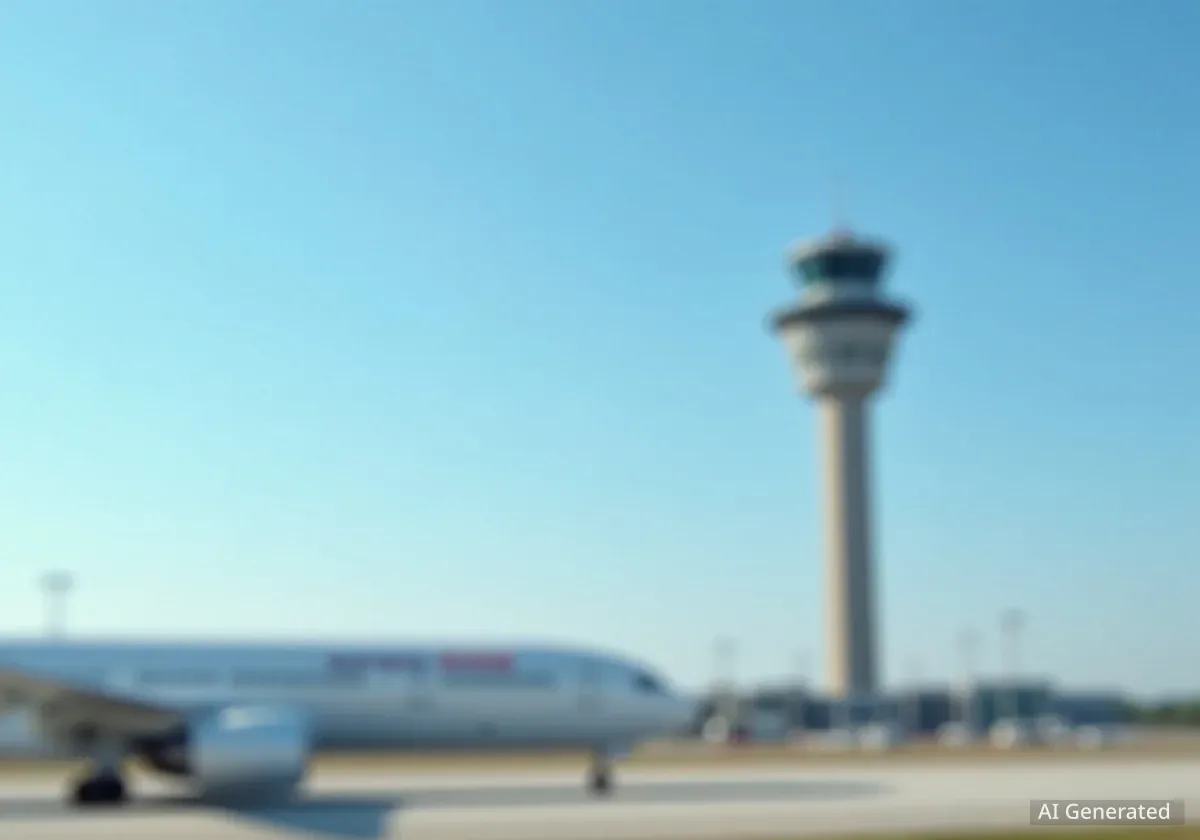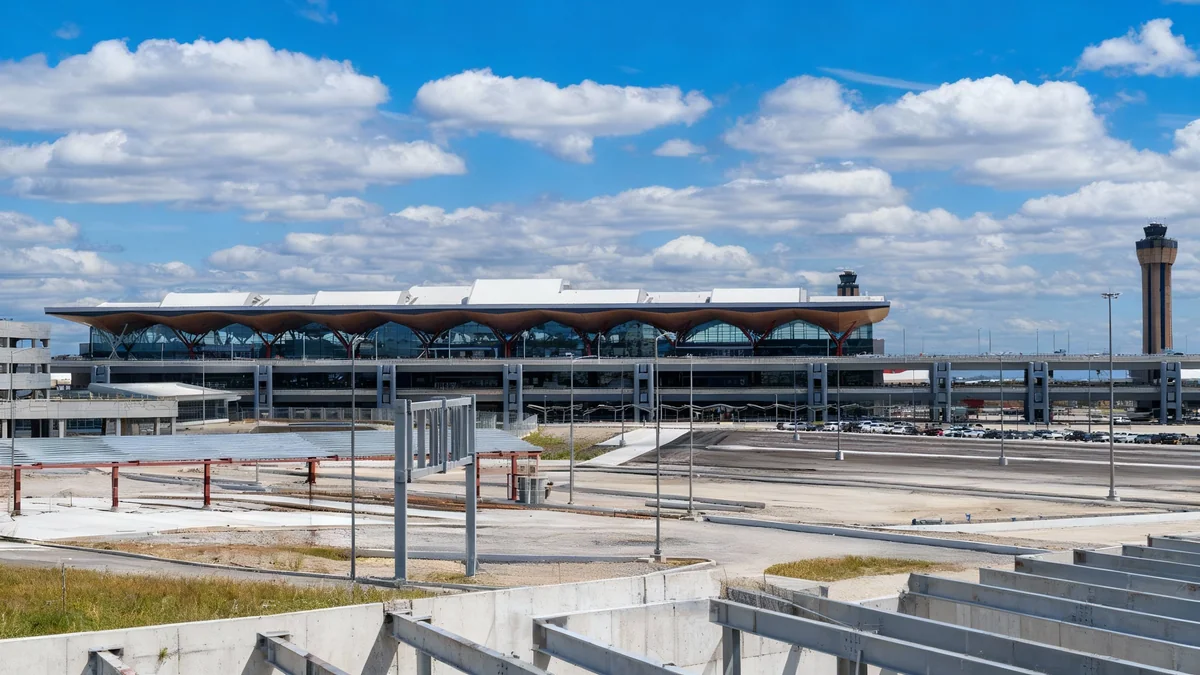Grand Forks International Airport (GFK) is set to expand its flight offerings, including a new daily flight to Minneapolis-St. Paul, as local leaders work to address high airfares and limited service. This expansion marks a significant step in the airport's strategy to enhance regional connectivity and attract more travelers.
Key Takeaways
- GFK adds a fourth daily Delta flight to Minneapolis-St. Paul.
- The airport aims to secure new service to a western hub, with Denver as a primary target.
- Local and federal funds totaling $1.5 million have been raised to attract new airlines.
- Grand Forks airfares are significantly higher than national and regional averages due to limited competition.
- A major runway renovation project is complete, supporting future growth and larger aircraft.
Addressing High Airfares and Limited Choices
For years, travelers from Grand Forks have faced higher-than-average airfares. Data compiled by the Grand Forks Air Service Task Force, established in 2023, shows that fares from GFK are 45% higher than the national average. They are also 40% higher than rates at Minneapolis-St. Paul (MSP) and 11% higher than in Fargo.
Airport officials attribute these high costs to a limited supply of daily seats and a lack of competition among airlines. Grand Forks International Airport Executive Director Ryan Riesinger emphasized that airports do not control ticket prices or flight schedules. These decisions rest solely with the airlines.
Airport Revenue Facts
- Airports like GFK receive zero revenue from ticket sales.
- Operating budgets are covered by parking fees, airline facility and landing fees, rental car commissions, and food/beverage sales.
- Property taxes are only used for the local share of capital projects, not daily operations.
New Minneapolis Flight and Future Plans
An official announcement on November 15 confirmed the addition of a fourth daily Delta Airlines flight between GFK and Minneapolis-St. Paul. This move aims to improve scheduling flexibility and provide better connections for travelers, especially business passengers.
Beyond MSP, the task force and Mayor Brandon Bochenski are actively pursuing service to a western hub. Denver is considered the most likely possibility. There is also interest in adding service to another major city hub, such as Chicago.
"Certainly, airfares, on average, are going to be less where there is more competition. It’s not the Grand Forks airport, or any airport for that matter, that sets airfares or pricing." – Ryan Riesinger, Executive Director, Grand Forks Airport Authority.
Funding Efforts to Attract New Carriers
To support these efforts, the task force successfully raised over $500,000 in local funds. This included $300,000 from the city and more than $200,000 from local businesses. This local commitment helped GFK qualify for a $1 million federal Department of Transportation grant, awarded in October 2024. The total $1.5 million is specifically earmarked to entice new airlines or expand existing flight options.
Historical Context
Airport use at GFK peaked in 2013, with 284,586 passengers. That year, the airport offered five daily flights to Minneapolis and daily United Airlines service to Denver. The Denver service ended in December 2013, contributing to the current service gaps.
Impact of Limited Capacity and Competition
A task force summary highlights a significant decline in seat capacity at GFK. Since 2019, the airport has experienced an 18% loss in seat capacity, and a 31% decrease over the past decade. During this same period, Fargo’s Hector International Airport saw an increase in capacity, partly due to Grand Forks passengers seeking more direct and affordable options.
The summary also revealed that Delta's profit margin at GFK is 19.8%, significantly higher than its systemwide profit margin of 4.4%. This makes GFK the 22nd best operating profit market for Delta out of 267 markets it serves.
One regular traveler from Colorado, Christopher Hewlett, noted that Delta has effectively cornered the market for flights into Grand Forks, hindering competition.
Traveler Retention Challenges
Of an estimated 383,000 trips taken in 2024 by individuals living within GFK’s catchment area, only 41% departed from Grand Forks. A substantial 40.1% drove to Fargo, and 17.3% traveled to Minneapolis to catch flights. For popular destinations like Denver and Chicago, GFK only retained 10% and 16% of passengers from its region, respectively.
"Both of those (destinations) are low because of the competitive dynamics that result in better schedules, lower airfares and direct flights from other airports," Riesinger explained. "That is one of the reasons for targeting new service to Denver and, hopefully in the future, direct service to Chicago."
Infrastructure Improvements Pave the Way
The airport has also made significant infrastructure investments. An ongoing capital improvement program recently completed the extension and renovation of a crosswind runway. This project, which received Federal Aviation Administration approval in 2019 and cost $70 million, enables the airport to serve larger aircraft and provides greater operational flexibility and safety during high winds.
This completed runway project also allows for the reconstruction of the primary runway, originally built in the 1960s, without disrupting current service. "These two runways are the ones that will support air carriers and other large aircraft operations for decades into the future," Riesinger stated, calling it a "huge benefit for air carrier flights and passengers."
Community Support is Crucial
Riesinger emphasizes that while the airport and task force are working to attract new service, sustained community support is vital. He urges both business and leisure travelers to utilize GFK whenever possible, especially as new flight options emerge.
He advises travelers to compare prices and schedules, considering all costs, including parking, when choosing an airport. GFK has worked to keep its parking fees reasonable. "Check your local airport and utilize your local airport as much as possible. Support the service. That’s what it’s going to take," Riesinger concluded.





